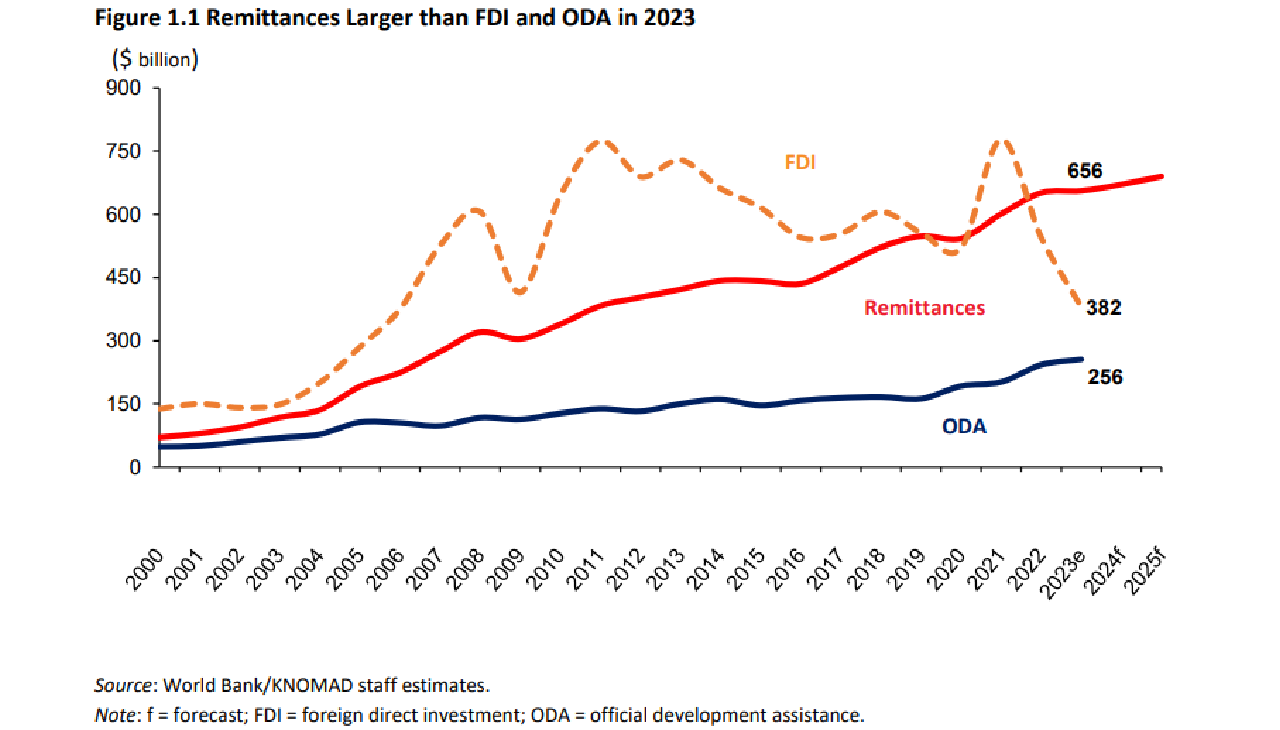
Remittances: the new $883 billion El Dorado
Migrant workers generate one of the largest flows of money in the world today. How much money do you send home?
By 2024, the world will set a new record: migrant workers from developed countries will have sent $883 billion back to their families, according to the outlook of the “Migration and Development Report 40”, published by The Global Knowledge Partnership on Migration and Development (KNOMAD), a division of the World Bank Group.
This trend has a clear explanation: the migration wave remains strong and those who migrate want to work and send money home to their families.
Due to their high level, remittances have become a crucial part of the external financing of several countries, the report explains.
As Foreign Direct Investment (FDI) plummeted during 2022 and 2023, remittances are now the most representative income for Low and Middle-Income Countries (LMICs).
The report highlights that “remittance flows to LMICs grew by 0.7% to reach $656 billion in 2023. Remittances continued to be the main source of external financing for LMICs and MICs during 2023, surpassing foreign direct investment (FDI) and official development assistance (ODA).”
India is the world's largest recipient of remittances, with an estimated inflow of $120 billion. According to the report, the second country in the ranking was Mexico, which received $66 billion in remittances. The third, fourth and fifth positions were occupied by China ($50 billion), the Philippines ($39 billion) and Pakistan ($27 billion).

RELATED CONTENT
Remittances positively impact the well-being of recipient families because they are used for basic consumption or even for savings and investments. It is documented that, for example, in Colombia, many families used this money to buy homes and other real estate.
“The United States has continued to be the largest source of remittances in the world, followed by Saudi Arabia and Switzerland. As a share of GDP, however, Saudi Arabia has a significantly larger volume of outward remittances than the United States. The top remittance source countries include members of the Gulf Cooperation Council (GCC). However, data on outward remittances tend to overstate the size of the flows in countries that are offshore financial centers,” the Report explains.
Last year, several factors affected the behavior of remittances: “Labor markets for migrant workers in sending countries; immigration policies affecting the flow of migrant workers, their transit routes and their employment prospects; exchange rate movements of major currencies of sending countries against the US dollar (affecting the valuation of remittances in US dollar terms); the prevalence of multiple exchange rates in receiving countries; and wars and conflicts.”
Remittances are today one of the most important financial flows from developed countries to other regions of the world. They play an important role in strengthening the economy and the financial situation of families in those countries. It seems that the trend will continue next year, when, according to projections, it will reach a level of 913 billion dollars.
It is the new El Dorado for several countries in the world. A lot of gold came from the work of emigrants.
If you need more information click here.











LEAVE A COMMENT: